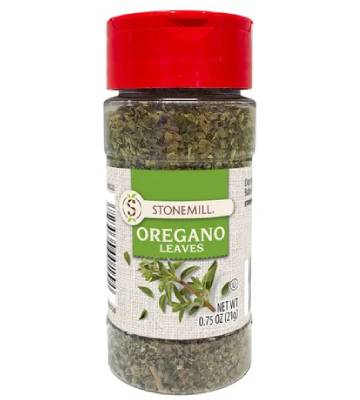Food Nutrition Facts
Nutrition Facts For
Oregano
Portion Size: 1 Tablespoon
| Nutrient | Value | % Daily Value* |
|---|---|---|
| 11.0 kcal | 1% | |
| 0.0 g | 0% | |
| 0.0 g | 0% | |
| 0.0 mg | 0% | |
| 0 mg | 0% | |
| 52.0 mg | 2% | |
| 2.0 g | ||
| 1.0 g | ||
| 0.0 g | ||
| 1.0 g | ||
| 0.0 g | ||
*Daily value based on a 2,000 calorie diet. Your daily values may be higher or lower depending on your calorie needs and health goals.
Calculate your daily calorie needs here
Nutrition Facts For 1 Tablespoon of Oregano

Oregano is a fragrant herb with a pungent, slightly peppery flavor, commonly used in Mediterranean and Mexican cuisine. Its leaves, typically small and oval-shaped, range in color from green to grayish-green. Beyond its culinary applications, oregano has been used for centuries in traditional medicine due to its purported health benefits, including potential antioxidant and antimicrobial properties. Whether fresh or dried, oregano adds a distinctive warmth and depth to a variety of dishes.
The flavor of oregano can vary depending on the variety and whether it's fresh or dried. Fresh oregano tends to have a more vibrant and slightly sweeter taste, while dried oregano's flavor is more concentrated and intense. It pairs well with ingredients like tomatoes, garlic, and onions, making it a staple in sauces, stews, and grilled meats. Oregano's robust flavor holds up well during cooking, making it a versatile herb for both long-simmered dishes and quick, fresh preparations.







